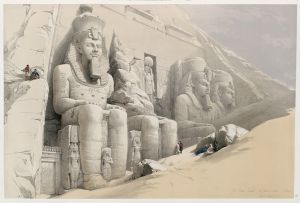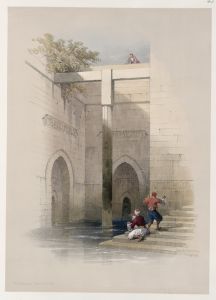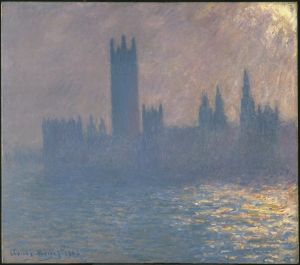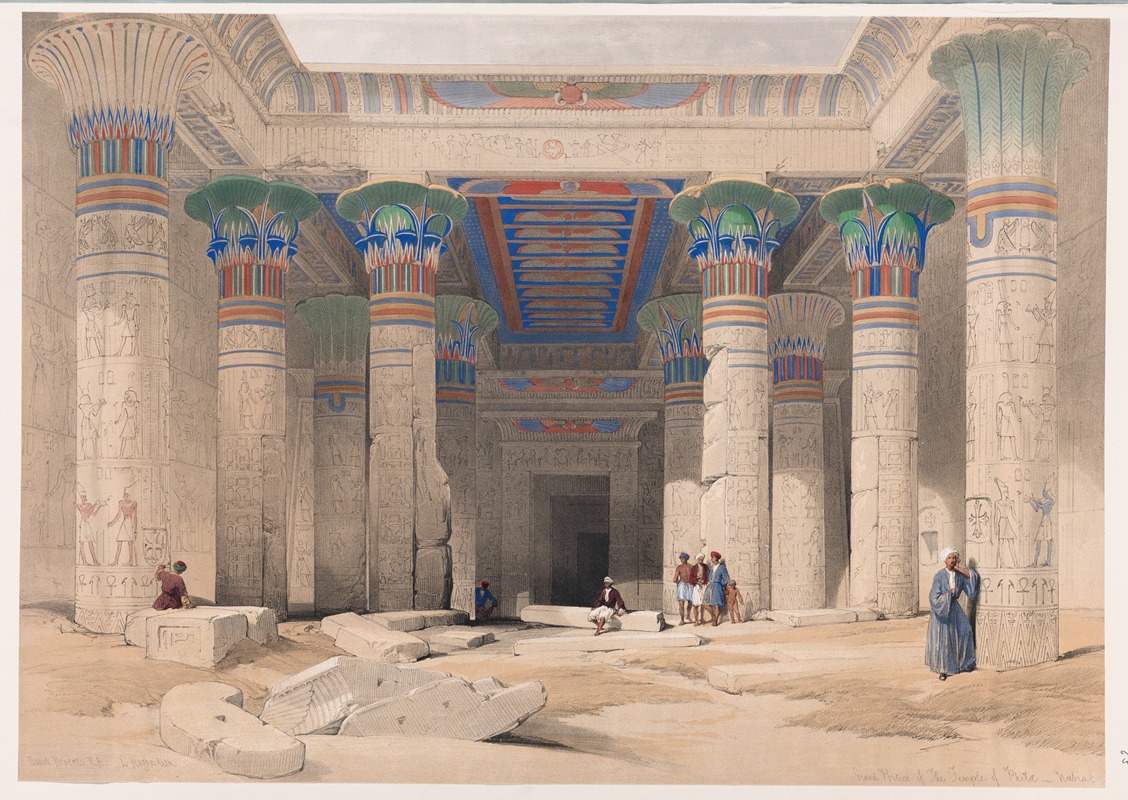
Grand portico of the Temple of Philæ, Nubia.
A hand-painted replica of David Roberts’s masterpiece Grand portico of the Temple of Philæ, Nubia., meticulously crafted by professional artists to capture the true essence of the original. Each piece is created with museum-quality canvas and rare mineral pigments, carefully painted by experienced artists with delicate brushstrokes and rich, layered colors to perfectly recreate the texture of the original artwork. Unlike machine-printed reproductions, this hand-painted version brings the painting to life, infused with the artist’s emotions and skill in every stroke. Whether for personal collection or home decoration, it instantly elevates the artistic atmosphere of any space.
"Grand Portico of the Temple of Philæ, Nubia" is a lithograph created by the Scottish artist David Roberts in the 19th century. It is part of his renowned series of works depicting scenes from Egypt and the Near East, which were published in the collection The Holy Land, Syria, Idumea, Arabia, Egypt, and Nubia between 1842 and 1849. Roberts' works are celebrated for their detailed and romanticized portrayal of ancient monuments and landscapes, offering a glimpse into the region during a period of growing European interest in Egyptology and the Middle East.
The lithograph depicts the grand portico of the Temple of Philae, an ancient Egyptian temple complex located on the island of Philae in the Nile River, near Aswan. The temple was dedicated primarily to the goddess Isis, one of the most important deities in ancient Egyptian religion. The portico, a prominent architectural feature of the temple, is characterized by its row of massive columns adorned with intricate carvings and hieroglyphs. Roberts' depiction captures the grandeur and detail of the structure, emphasizing its historical and cultural significance.
David Roberts visited Egypt and Nubia during his travels in 1838-1839. He sketched numerous ancient sites, including the Temple of Philae, which he later transformed into finished works with the assistance of lithographer Louis Haghe. The lithographs were highly regarded for their artistic quality and accuracy, although they also reflect the romanticized aesthetic typical of the Orientalist movement of the time.
The Temple of Philae itself has a long and complex history. Originally constructed during the Ptolemaic and Roman periods, it became a center of worship for Isis and continued to be used as a place of worship even after the advent of Christianity. In the 20th century, the temple was relocated to the nearby island of Agilkia as part of the UNESCO Nubian Campaign to save monuments threatened by the construction of the Aswan High Dam and the resulting flooding of the original site.
Roberts' lithograph serves as both an artistic achievement and a historical document, preserving the appearance of the Temple of Philae as it stood in the 19th century. His work remains an important resource for understanding the cultural and architectural heritage of ancient Egypt and Nubia.





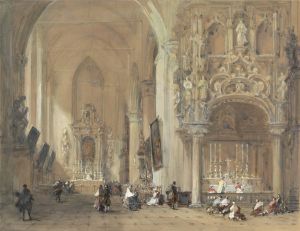
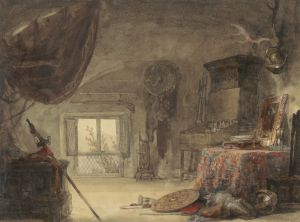
![Colossus in front of Temple of Wady Saboua [Wadi al-Sabua], Nubia.](/imgs/217471/s/david-roberts-colossus-in-front-of-temple-of-wady-saboua-wadi-alsabua-nubia-503a97c9.jpg)
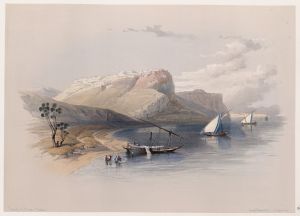

![Medinet Abou [Medinet Habu], Thebes. Dec. 5th, 1832.](/imgs/217510/s/david-roberts-medinet-abou-medinet-habu-thebes-dec-5th-1832-9c2109da.jpg)
![One of two colossal statues of Rameses [sic] II. Entrance to the Temple at Luxor.](/imgs/217522/s/david-roberts-one-of-two-colossal-statues-of-rameses-sic-ii-entrance-to-the-temple-at-luxor-473c42e1.jpg)
![Portico of the Temple of Edfou [Idfû], Upper Egypt. Nov. 23rd, 1838.](/imgs/217527/s/david-roberts-portico-of-the-temple-of-edfou-idfu-upper-egypt-nov-23rd-1838-79b6cf5b.jpg)
![Ruins. Temple on the Island of Biggeh [Bîga, Bîjah], Nubia.](/imgs/217537/s/david-roberts-ruins-temple-on-the-island-of-biggeh-biga-bijah-nubia-1cd1f41d.jpg)
![Temple of Wady Kardassy [Qirtâsî] in Nubia.](/imgs/217550/s/david-roberts-temple-of-wady-kardassy-qirtasi-in-nubia-d2cce283.jpg)
